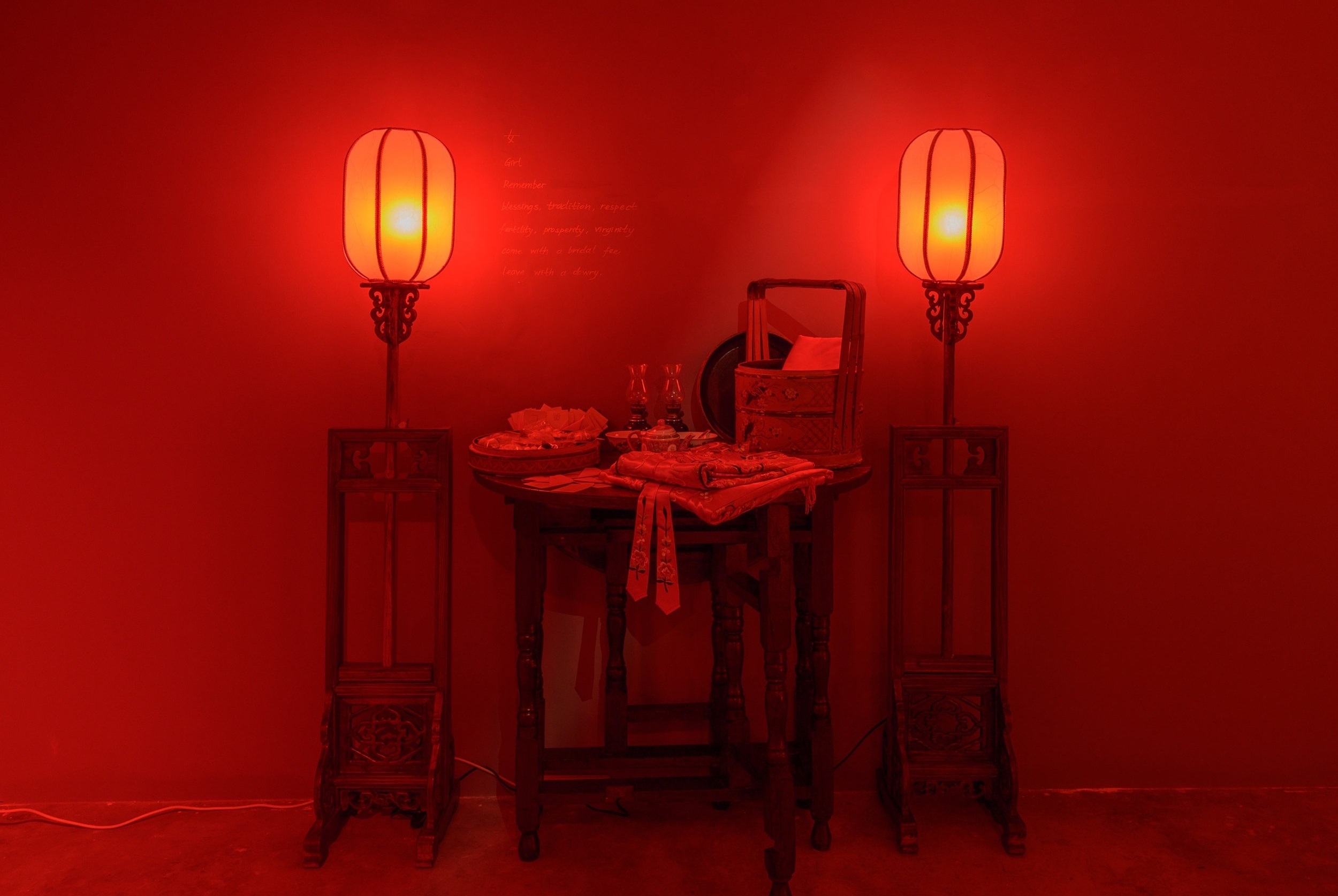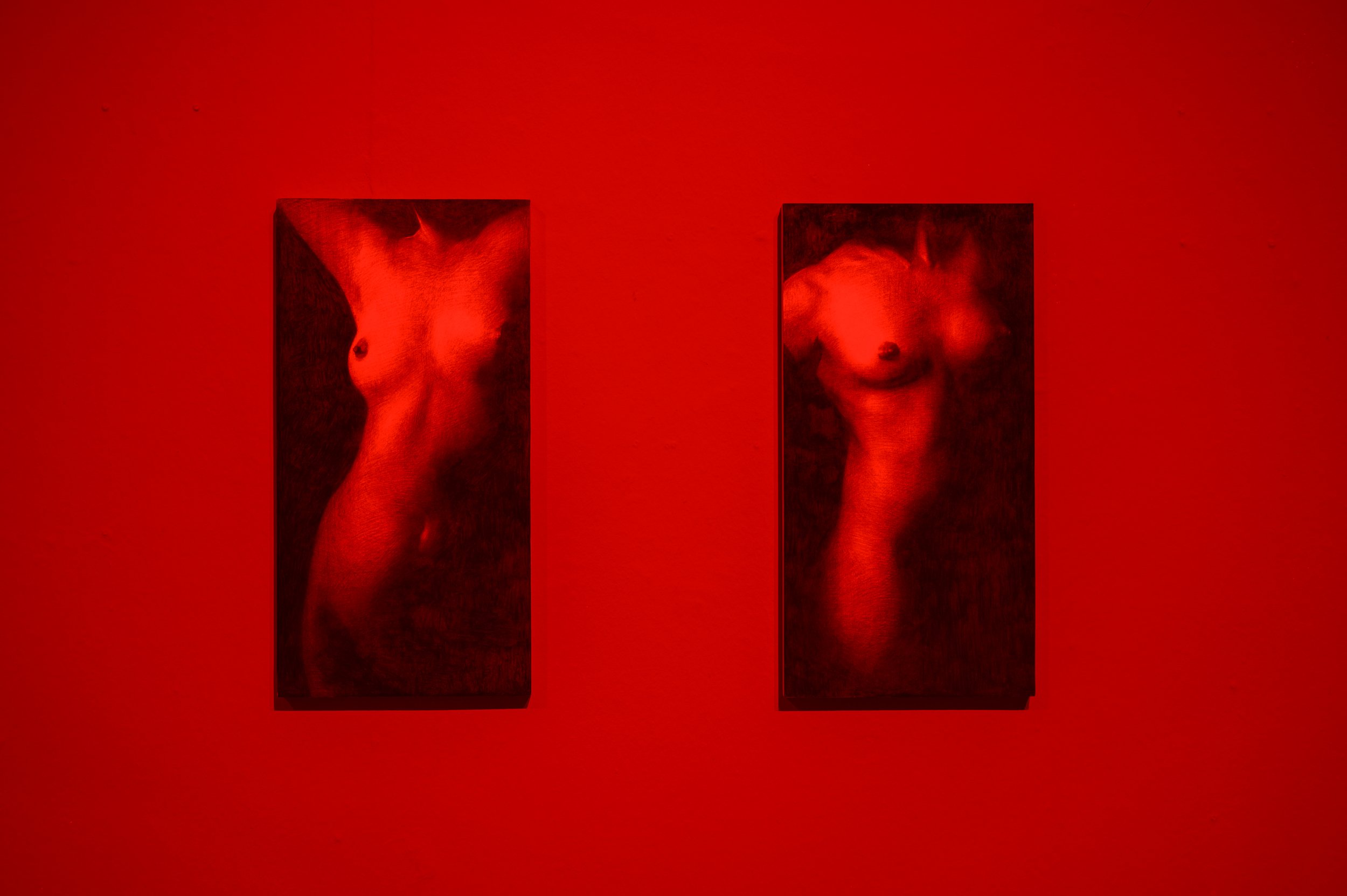Stories of a woman and her dowry, 2019 - 2022
“Stories of a Woman and Her Dowry is the first solo exhibition after Yanyun Chen’s successful outing at the Singapore Art Museum’s President’s Young Talents (PYT) showcase. It highlights the signature narrativity of her installations, both visible in the PYT presentation and here, where the work is as much seen as read, and text functions as theoretical and narrative devices equally, if not more so than visual ones.
The installation is organized novelistically, with four chapters and a prologue. Each chapter is named by a Chinese ideogram, each designating the roles and life-stages a woman was expected to occupy within the Chinese-Hainanese-Cantonese milieu of her family - 女 nu (woman), 妻 qi (bride), 娘 niang (wife), 母 mu (mother). Stories of a Woman and Her Dowry as an installation works as spatial auto-fiction, in which the walls of the Grey Projects space becomes the analogue to pages and text, and the encompassing space the spin of a biography of a young woman weighing the consequences of these expectations and staging a refusal. The installation draws filmic associations with scenes in Raise the Red Lantern (1991), A City of Sadness (1989), as well as literary allusions to an Ophelia-like body floating on a plain of liquid red.”
Jason Wee, Grey Projects, 2019
Stories of a Woman and Her Dowry has been exhibited at Grey Projects Singapore from 16th March 2019 to 27th April 2019; and at Art Science Museum from 23rd November 2019 to 10th August 2020.
Stories of a Woman and Her Dowry
女娘妻母
Girl, bride, wife, mother
This is a story of a woman — and her dowry.
My grandmother and I have a tense relationship.
Her beliefs and my actions grate at each other, generations apart.
She was married in the 1950s: in a time when the value of a Straits Chinese daughter is to be found in being wedded-off young, virginal, ostentatiously decked in red and gold, with a substantial dowry, for a suitable price. She was that woman.
What is the price of a bride?
The dance of a marital economy—potlatch.
These dowry objects,
each a token of a price of a woman who came before me:
the price she was valued at; the price she paid.
To prove she had value.
I am not that woman.
I refuse to be priced;
so have no worth.
Will not be a good—
perhaps am no good.
Am questionable,
so constantly questioned,
put into question.
We reach a stale-mate—
Dowries remind us
of our broken conversation.
Worthless;
priceless.
STORIES OF A WOMAN AND HER DOWRY - THREE DAWNS, 2022
Exhibited at While She Quivers Objectifs Chapel Gallery in 2022 with Kanchana Gupta’s Production of Desire.
Curated by Kimberly Shen
"While She Quivers bridges the converging practices of visual artists Kanchana Gupta and Yanyun Chen, interrogating the socially and culturally defined frameworks of femininity in a quiet provocation of desire, power, intimacy, and personal agency. The exhibition presents rich and embodied extensions of their long-term explorations – Kanchana’s Production of Desire and Yanyun’s Stories of a woman and her dowry. Both works navigate the precarities of the cultural tropes and expectations of Asian women, in a palpable reclamation of tenderness and strength embedded in the feminine narrative and identity.
Quivering, as a gesture, denotes a restlessness, tension, and uncertainty that is also fuelled by emotive power and potency. It requires vulnerability in strength, resists subjugation, and demands a bold incitement of power. Kanchana and Yanyun’s incisive installations transform the Objectifs Chapel Gallery into a space that is visceral and contemplative; employing symbolic gestures, rituals and objects in ways that are equally autonarrative and somatic to unpack the underlying performativity of being a woman.

















